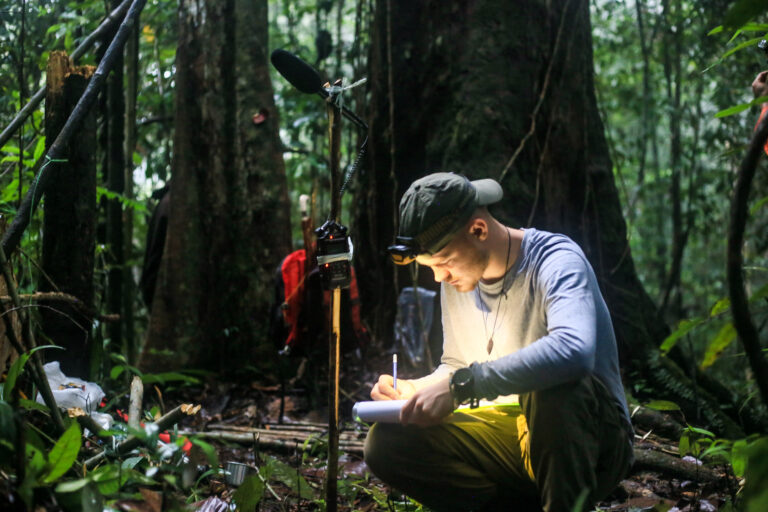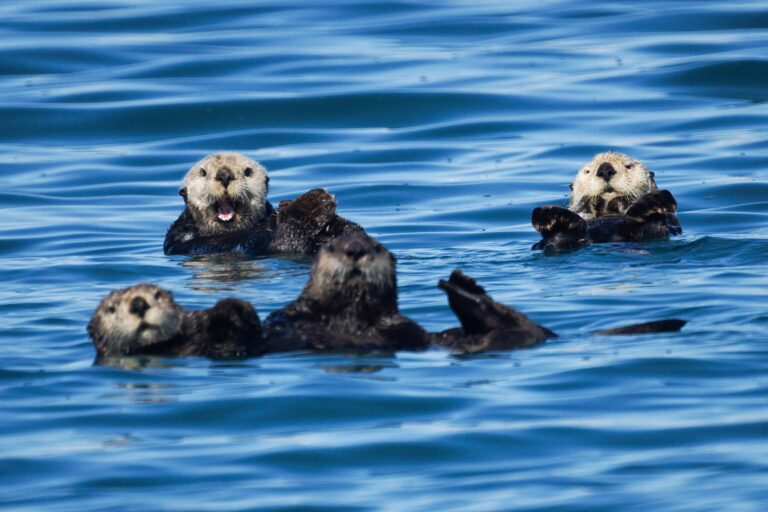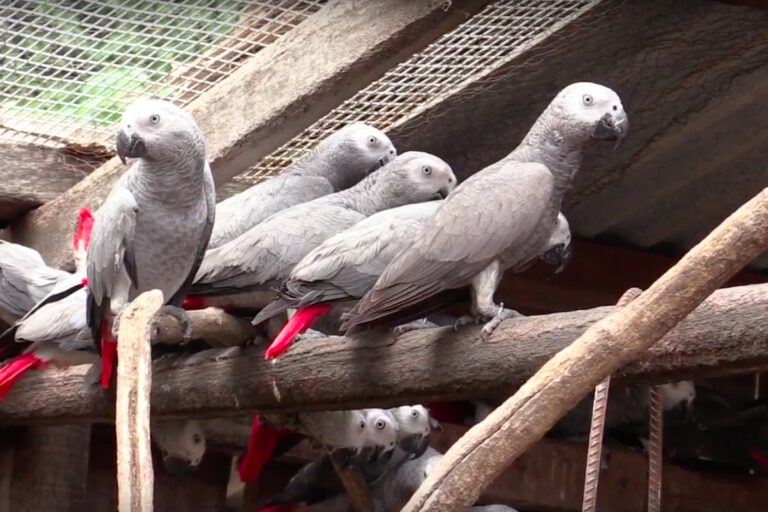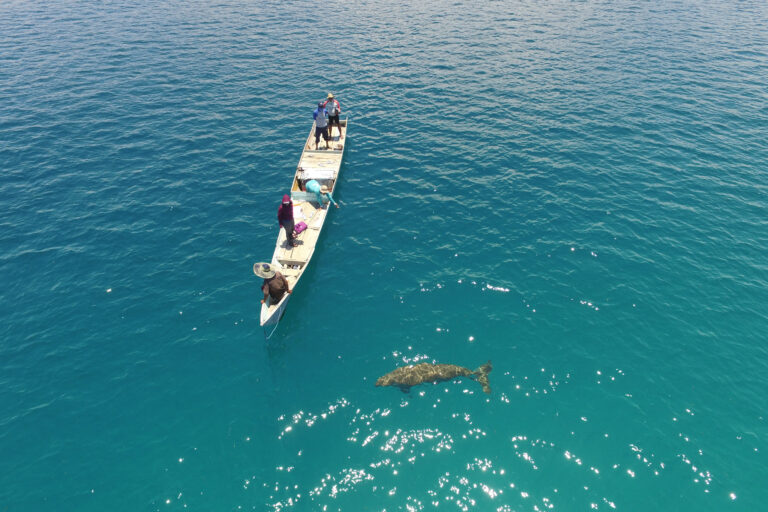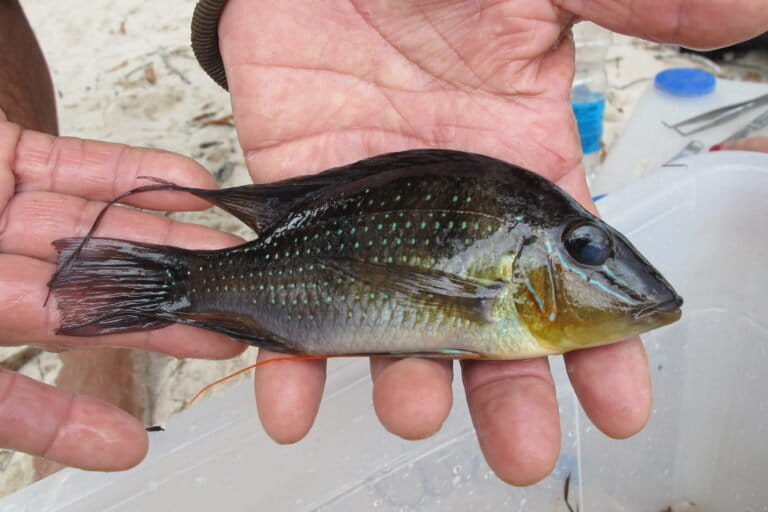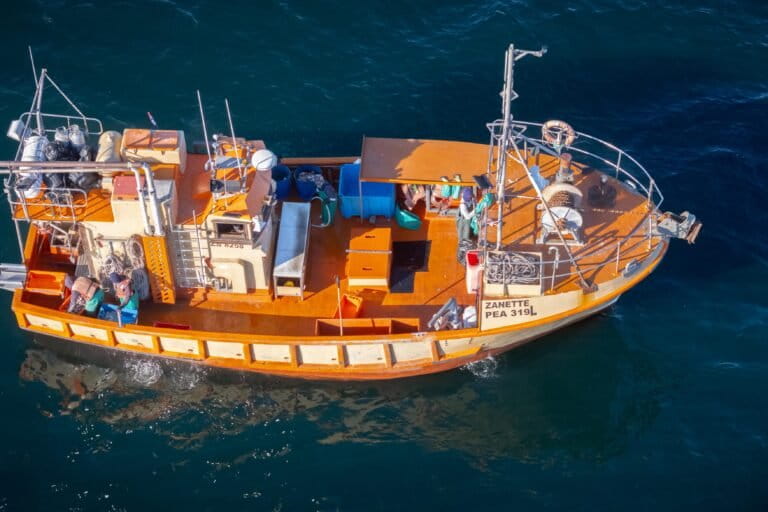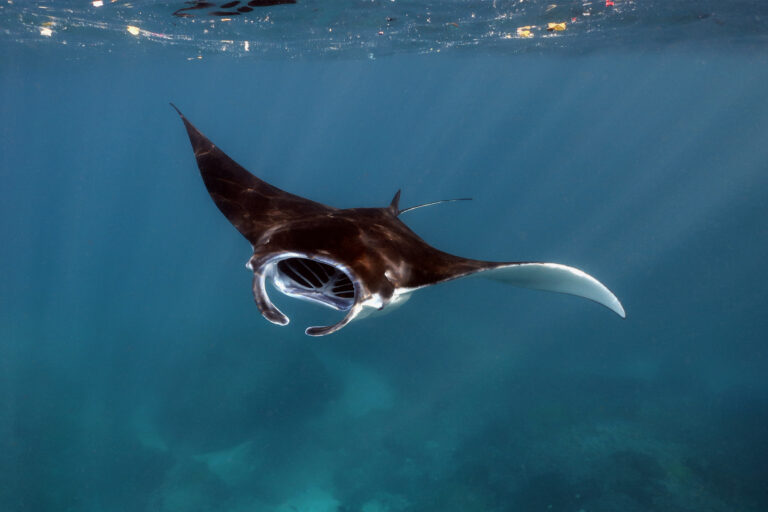- In the years since Madagascar’s 2009 coup d’état, the area around Ranomafana National Park has faced security threats from illegal gold miners, armed cattle rustlers, and bandits that have made it increasingly difficult to operate parts of the park.
- Elsewhere in the country illegal logging and mining, corruption, impunity and other breaches threaten to undermine conservation efforts, and limited funds make enforcement difficult.
- The problem underscores a broad challenge for conservationists across Madagascar: how to make progress on a set of environmental goals that depend fundamentally on the rule of law?
- This is the second story in Mongabay’s multi-part series “Conservation in Madagascar.”
RANOMAFANA NATIONAL PARK, Madagascar — Late in the afternoon on June third of this year, Pierette Razafiandravao was at home getting ready for a church outing the following day when she heard gunshots in the distance. At the time, she didn’t think much of it. Armed cattle rustlers have become a disturbingly common presence in her corner of southern Madagascar, and that morning she’d gotten word of a standoff between soldiers on patrol and a group of bandits a few miles north of her house.
It was only later that she realized she’d heard the bullets that killed her husband.
When police arrived at the scene, they found his motorcycle neatly parked, leaning on its kickstand, along with his cell phone and his wallet, which still had money in it. This was not a robbery: it was a hit.
Elysé Arsène Ratsimbazafy was mayor of Ambalakindresy, a small town on the western flank of Ranomafana National Park.
He’d run for office on a platform to rid the town of “dahalo,” the bandits who had made off with so many of his neighbors’ livestock, but some people wondered if his death might also be tied to his cooperation with efforts to stop gold mining inside the national park. Razafiandravao thinks some of the people behind cattle rustling and gold mining are one and the same. “If the dahalo are there in the forest, the security here is quiet,” she told Mongabay in an interview. “If they are not there, people attack the village.”
Ratsimbazafy’s death had an undeniable chilling effect on his colleagues. José Manarinsoa, the mayor of the town of Ranomafana, on the opposite side of the park, made a point of skipping the funeral. “I’m afraid, so I stayed away,” he said. Manarinsoa has been an outspoken critic of illegal gold mining in the past, going on national television to denounce incursions into the park. But he said his friend’s death had made him rethink being so public in his criticism. “I stopped,” he told Mongabay, “because, I had a feeling that if the gang heard me, is the same thing going to happen to me?”
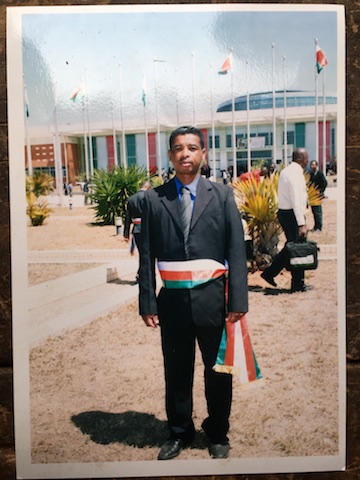
In the years since Madagascar’s 2009 coup d’état, the area around Ranomafana has faced a series of security threats that have made it increasingly difficult to operate parts of the park. Gold panning has constrained community-led patrols and local cooperation with park rangers, interfered with long-term ecological research, and made it harder to organize development programs on the periphery of the park, destroying protected wetlands in the process.
Illegal gold mining is both a symptom and a cause of the rise in crime in the area, as people living in poor communities beset by livestock theft are drawn to take part.
“It’s a vicious cycle,” said Ranomafana National Park’s director, Josiane Rakotonirina. “Without alternative livelihood [programs], the threats to the community will only go up, but without better security, it’s harder to put those activities in place.”
Earlier this year, security concerns led a pharmaceutical company to scrap plans for a plantation of Artemisia annua, a plant used in anti-malarial medication, near Ambalakindresy.
Ranomafana’s security problem underscores a much broader challenge for conservationists across Madagascar: how to make progress on a set of environmental goals that depend fundamentally on the rule of law? In 2016, when USAID unveiled a “request for information” [pdf] for its first new environmental program in the country in nearly a decade, it included a long list of what the agency called critical assumptions — “conditions beyond the scope of the program to fully control” that are nevertheless crucial for the success of USAID-funded projects. (A request for information is usually a pre-cursor to a “request for proposal,” an early step in the agency’s funding process)
Three of the assumptions focused on the rule of law:
- In terms of law enforcement efforts to curb illegal activities such as illicit logging, overfishing, and wildlife trafficking, it is assumed that fear of retribution will not overly deter community participation in advocacy and judicial processes
- Increased reporting and advocacy may serve [to] deter corruption by local and national officials who might otherwise be complicit in illicit activities
- Coalitions formed between interested groups such as communities, protected area managers, conservation organizations, other donors, and civil society increasingly serve as some counterweight to illegal actors.
Announcing these critical assumptions publicly serves as a hedge against the messy reality of trying to implement effective conservation programs in Madagascar. It also raises questions about the kinds of approaches donors seek to fund: if corruption and illegal activity are such central concerns that they threaten to derail conservation goals, is it realistic to rely on the assumption that they won’t?
Daniel Whyner, who oversees USAID’s environmental programs in Madagascar, said the critical assumptions arise partly from congressional restrictions on how “biodiversity conservation dollars” can be spent. They also serve as a signal to groups seeking grants. “How can we address these things beyond the scope of the funding we have?” he said in an interview. “I think we want offerers to understand that context when they…write their proposals. So we’re telling them to be mindful of these issues, and to reach out to the right kinds of partners to address them.”
Challenges to the rule of law have constrained conservation efforts throughout the country. At the national level, the 2009 coup led the U.S. and other donors, including Germany, the European Union, and the World Bank to reduce funding for biodiversity conservation in Madagascar, over the objections of NGOs who pleaded for continued support. That reduced funding, in turn, led Madagascar National Parks to suspend royalty payments from park entrance fees to local communities, a decision Ranomafana’s mayor, Manarinsoa, sees as contributing to continued poverty and resentment of the park locally.
Illegal rosewood logging in parks throughout Madagascar’s humid eastern forests has threatened their collective status as a UNESCO World Heritage Site and eroded local norms that protect against fires and woodcutting. As security worsened in the southeast following the 2009 coup, the Missouri Botanical Garden was forced to withdraw from one protected area for several years. Staff at the World Wide Fund for Nature (WWF), the conservation NGO with the largest footprint in Madagascar, went through long periods when they were unable to visit parts of protected areas under their supervision in the southeast.
“What can we do there, really, if our field staff cannot go in the forest, in the village where we’re supposed to work?” recalled Nanie Ratsifandrihamanana, WWF’s country director in Madagascar. “We had to tell the donors ‘everything is on standby, we can’t work there.’”

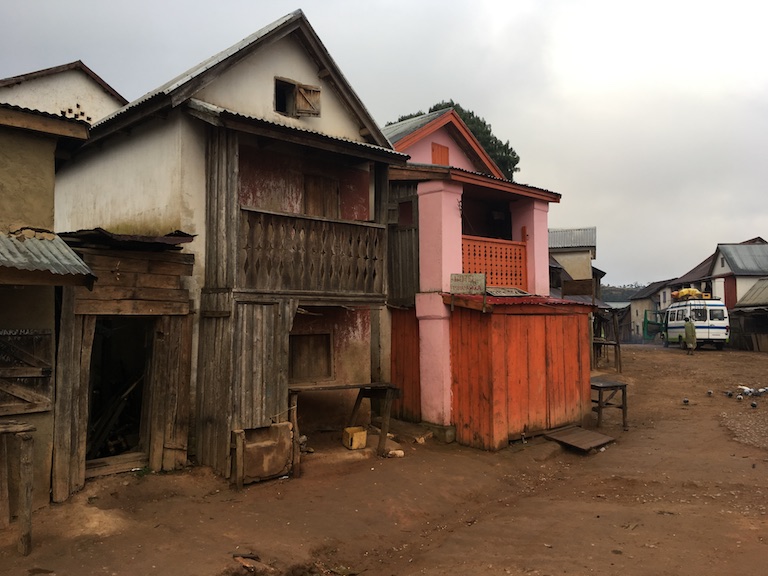
Enforcement in Ranomafana
Ranomafana is one of the country’s most-traveled and best-funded national parks, with more than 20,000 annual visitors and a research station, the Centre ValBio, that hosts teams of scientists throughout the year. (Rhett Butler, the founder and CEO of Mongabay, is a member of Centre ValBio’s advisory board.) This intense interest, and the funding that comes with it, both insulates Ranomafana from fallout over poor security and makes it uniquely vulnerable to perceptions of risk or illegal activity.
As Mamy Rakotoarijaona, the director of operations for Madagascar National Parks, put it, referring to tourism in Madagascar as a whole, “This is a very sensitive industry. A little typhoid in the Indian Ocean, a little terrorism in Paris, and we’re screwed.”

In July, a convoy of taxis-brousse was ambushed by gunmen in Vohiparara, a community along the road that bisects Ranomafana National Park. Dozens of passengers in seven vehicles were held at gunpoint and stripped of their belongings, as rocks dragged onto the road blocked their path.
The attack prompted Manarinsoa, Ranomafana’s mayor, to convene a meeting with the hotel operators who host tourists along the road between Ranomafana and Vohiparara to address security concerns and discuss possible solutions. “We can’t wait for [the bandits] to get to Ranomafana,” he explained.
Raymond Razafindratsira, who oversees the western section of the park, where gold mining and robberies on the park’s periphery are most pronounced, had already directed his staff to stop traveling to the villages where their community patrol agents live. To receive their stipends, agents would meet them in Vohiparara, instead. After the attack in Vohiparara, Razafindratsira said, “We started paying them here in Ranomafana,” a few blocks from the park headquarters, but a full day’s walk for many of the agents.
Razafindratsira said the mining has also affected his ability to get tips about illegal activity from locals. “Some people have stopped talking,” he said. Others “talk silently,” with text messages and calls.

Long before it was a national park, Ranomafana had been the site of a commercial gold mining operation during the colonial era. According to park managers, small-scale miners have operated in Ranomafana intermittently since 2003. After the coup, they began to enter the forest in increasingly large numbers.
One of the areas of Ranomafana where the negative effects of gold mining are most apparent is called Soarano, meaning “good water,” a vast, high-elevation wetland known for palm-like Pandanus trees where long-leaved Eulophiella roempleriana orchids unfurl during the rainy season. Hikers approaching from the west encounter a series of successively larger holes a guide called “soil tests” for miners, eventually reaching a stream where the forest has been cleared along both banks. The wetland itself has been turned into a kind of swiss cheese, with thousands of deep mining pits separated by stretches of tall grass, extending in a quarter-mile band for more than two miles. A thick tangle of vines and palms along either side is the only hint that most of the marsh was covered with dense vegetation and 30 foot Pandanus trees just a few years ago. Miners cut them down to shore up the walls of each new hole so they can lift buckets of sandy ore to the surface.

Claude Jacquot Ralazampirenena supervises fieldwork for a long-term ecological monitoring program through Centre ValBio, which requires him to spend as much as two months at a time in remote areas of the park. Once he came across 40 dead frogs of the same species in a single day, walking along a stream eroded by gold miners. At times, he said, “it’s like a market, there in the forest. There are people everythwere. If you stay still, you can hear people talking.”
In 2014, he returned to a vegetation sampling plot near a spot where he’d gone to try and talk with miners the previous year. “We came back, and all the tree tags had been removed. All the ropes we’d used to divide it into subplots were gone, many trees were cut down,” he said. We spent another 20 days sorting it out.” Now, Ralazampirenena says, he never makes his camp in the same place two years in a row.
During a visit to Soarano in July, the closest this reporter came to miners was to make out a quartet of young men in the distance, working long-handled shovels back and forth in the mud. As soon as the group noticed an interloper, they picked up their tools and hightailed it across the swamp.
In addition to the risk of hunting and fire raised by the presence of people living in sensitive areas, mining can cause rapid erosion that has effects throughout the watershed. In 2015, constituents from the village of Bevoahazo, downstream from Soarano, approached Ranomafana’s mayor, Manarinsoa, to complain that the local water supply had turned a cloudy brown. Two days later, he said, dahalos raided Bevoahazo and stole 100 oxen, a move widely seen as retaliation for going to the authorities.
Some fear miners in Madagascar may soon resort to using mercury to separate the gold from the ore, a technique that is responsible for extensive environmental damage and health problems in other parts of the world.
In 2011, a wave of illegal mining destroyed nearly 50 hectares of wetlands in part of the park near Ambalakindresy, prompting a joint enforcement operation by Madagascar National Parks (MNP) and the forest service, along with government law enforcement agencies. Fifteen people were arrested and 50 miners were expelled from the park. Similar enforcement actions have been repeated sporadically in response to surges in gold mining.
Today, parts of the park have become “zones rouges,” or “red zones” for MNP. “Some places we can’t go,” said Blandine Razafiajafara, one of the community patrol agents who had come to town for her pay, “and some places we can’t go except with the police.”
Sitting in her office in July, park director Josiane Rakotonirina pulled up maps overlaid with a color-coded grid showing how frequently each small quadrant had been patrolled in the first six months of the year. Some had been visited once a month, others not at all. Still others had been patrolled only by a “brigade mixte,” an inter-agency team comprised of community patrol agents, MNP officers and their counterparts from the forest service, along with local and national police and soldiers from the army. “To go in zones with illegal mining, a brigade mixte is the only option,” she said.
At the end of 2016, Rakotonirina orchestrated a series of brigades mixtes to counteract the largest mining encampments discovered to-date. They estimated there were as many as 800 miners in the park, using shovels and crude wooden sluices and living in makeshift thatch lean-tos. Many were armed, fueling speculation that their rudimentary equipment masked a well-organized effort with outside funding. As Ranomafana’s mayor, José Manarinsoa, explained, “Miners have groceries and supplies for several months: someone must be financing it.”
While the efforts were successful in stopping mining temporarily, robust enforcement is costly. In 2016, brigades mixtes required more than 1,000 person-days in the field, all told, along with car rentals and supplies, with MNP footing the bill. In a park that covers 280 square miles of dense rainforest, Rakotonirina said, MNP was able to conduct two brigades mixtes a month, thanks to a grant from the Madagascar Biodiversity Fund, a national foundation that supports Madagascar’s protected area system. “We can only do what we can do,” she said. “We need reinforcements.”


“No lemurs, no money”
Because of the way the Malagasy conservation sector is organized, most international funding flows through parastatal organizations like MNP that are affiliated with, but independent of the government — rather than directly through government agencies. In the words of one forester, the result is a situation where groups like MNP “have all the resources and none of the authority for enforcement,” while the forest service and law enforcement agencies have “all the authority and none of the resources.”
At the start, the purpose of this arrangement was to shield conservation groups from the influence of political corruption, but it has also contributed to an environment where police don’t have the wherewithal to conduct operations that have a direct effect on protected areas. After the attack on taxis-brousse in Vohiparara, the local police commander said, it took him more than an hour to find a borrowed car with enough gas to travel seven miles to the crime scene. “This is not like where you’re from in the U.S. or France,” he said. “When someone attacks even five kilometers away, we have to hitchhike to get to the incident.”
Mamy Rakotorijaona, the director of operations for MNP, says interventions in protected areas are widely perceived as beyond the scope of work for police officers. “Already, the police ask for lots of money when you ask them to come into the park,” he said. The perceived danger of interacting with gold miners has strained collaboration. “If we start talking about Kalashnikovs, they’ll ask for even more money, even though it’s supposed to be their job,” said Rakotorijaona. In Ranomafana, police have lobbied for an increase of the per diem payments they receive for participating in brigades mixtes, from 20,000 ariary to 36,000, or from about 7 to 12 dollars.

Other parks have faced similar incursions, sometimes far more dramatic than those in Ranomafana. In the Corridor Ankeniheny Zahamena, farther north, tens of thousands of miners streamed into a protected area last fall after the discovery of a rich sapphire deposit. In 2009, incursions by armed gangs of rosewood loggers forced staff at Marojejy National Park to abandon their posts and close the park to visitors for two months.
Rakotonirina underlined the importance of persuading high-ranking officials and politicans of the value of conservation and the need for robust enforcement, a task complicated by the fact that environmental crimes are often assumed to be the work of Madagascar’s political class. Several of Madagascar’s most prominent rosewood operators, for instance, are also representatives in Parliament.
Recently, BIANCO, Madagascar’s national anti-corruption office, has referred a number of rosewood cases for prosecution, including several that have landed traffickers in jail, albeit temporarily. “What we see over the course of several years is that they always find a way to get out after a few months—with official permission,” said Tsiry Razafimandimby, a spokesman for BIANCO. “The traffickers take orders from high-ranking officials. Somehow, it’s like they’re employees, with politicians that play a role of facilitator and protector.”
That’s an area where Daniel Whyner of USAID says foreigners can and should play a bigger role. “We’re not the only actors in-country: there are influences we can use through [the] State Department, through our relationships with the government on security, through [the Department of Defense], we can bring to bear on the problem.”
The Malagasy primatologist Jonah Ratsimbazafy believes donors should go one step further and cut off all government support if certain conditions aren’t met. With regard to the influx of miners in Zahamena, “I would say, by the end of the year, this problem should be solved: no lemurs, no money,” Ratsimbazafy said. “I think at some stage, you have to do that. When it’s getting better, you can release, but there are times you need to be strict, you need to be tough. That’s the carrot and the stick.”
Many of the same donors who fund conservation work have been around the table for broad-based initiatives like Madagascar’s recent $900 million pitch to overhaul security, which includes everything from reducing corruption among traffic cops to stemming the flow of illegal firearms. In 2014, then Prime Minister Roger Kolo got support from the UN’s World Food Program and Food and Agriculture Organization for a campaign to convince dahalos to disarm and re-enter society with incentives like regional food aid and supplies for farming.
But only a tiny fraction of Madagascar’s conservation funding has explicitly sought to address issues of corruption and rule of law. Most recently, in 2016, Alliance Voahary Gasy, a coalition of civil society groups, got funding through the U.S. Fish and Wildlife Service to implement an anti-trafficking strategy for endangered ploughshare (Astrochelys yniphora) and radiated tortoises (Astrochelys radiata). Other efforts have primarily related to rosewood. The World Bank and USAID, for instance, have each funded technical reports on governance and small-scale programs to improve monitoring of illegal logging.


Life amid lawlessness
Maria Adeline Hantamalala, a 32-year old mother of four, lives in a small settlement called Ankialo outside of Ambalakindresy. In the past two years, she said, all eight of her neighbors’ homes had been robbed at least once. “Two years ago, the dahalo here, they would only take the zebus,” she said. But now, there are no zebus left, so they take geese and ducks and pots and pans and everything in the house.” They even took pigs some people had been given as part of an animal husbandry program run by Centre ValBio, she said.
It got so bad that her husband and other men from Ankialo had gone to the city of Ambalavao, several hours away, to look for work as carpenters, Hantamalala said. Others, from communities nearby, had turned to gold mining. “We know the effects of cutting trees and digging gold. But some people are very poor, they need food, so they go to do it,” she said. “We’re afraid of the park because we know the rules — if the park catches you they send you to the police.”
Park officials have to walk a delicate line between pushing for stronger enforcement — choking off access points to the forest — and devoting more resources to agriculture or handicraft programs that will make mining a less appealing source of income to people that live near the park. If they are to succeed in keeping mining from mushrooming to the proportions it reached in Zahamena, it will be thanks in part to cooperation from civil servants like Manarinsoa, and Ratsimbazafy, the late mayor of Ambalakindresy.
“My husband never had a community meeting where he didn’t discuss conservation,” Razafiandravao, the mayor’s widow, told Mongabay. She is still waiting for police to make their first arrest, or provide more information about the particulars of her husband’s murder.
“Since this is Madagascar, we’ll never get the whole story” said Pat Wright, the founder of Centre ValBio who was instrumental in the creation of the national park. The local consensus seems to be that the hit had more to do with Ratsimbazafy’s push to repel dahalo from Ambalkindresy than with his opposition to gold mining.
What is undeniable, though, is that conservationists lost a valuable collaborator. For the “critical assumptions” that undergird conservation efforts to come true — “fear of retribution will not overly deter community participation in advocacy and judicial processes” — men and women like him will have to be protected.
Banner image: Male Calumma crypticum chameleon, a species that lives in Ranomafana National Park. Photo by Rhett A. Butler.
Rowan Moore Gerety is a reporter and radio producer based in Miami. Read more of his work at www.rowanmg.com.
This is the second part of Mongabay’s multi-part series “Conservation in Madagascar” being published during the fall of 2017. The entire series will be collected here.

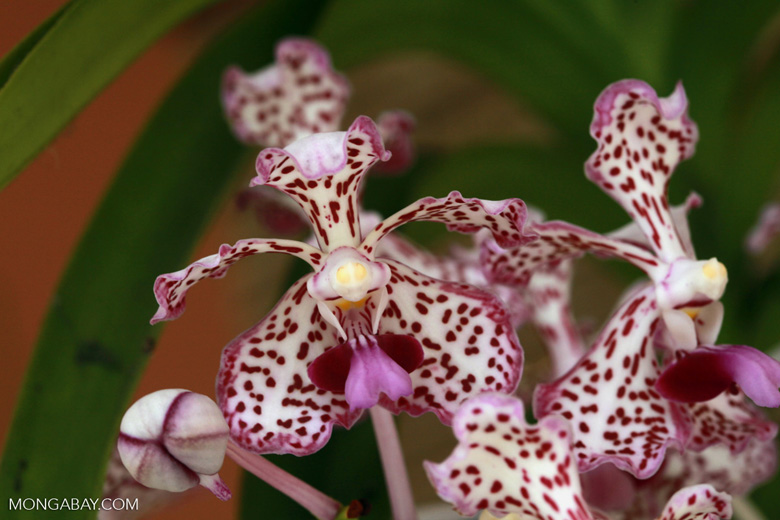
FEEDBACK: Use this form to send a message to the editor of this post. If you want to post a public comment, you can do that at the bottom of the page.













